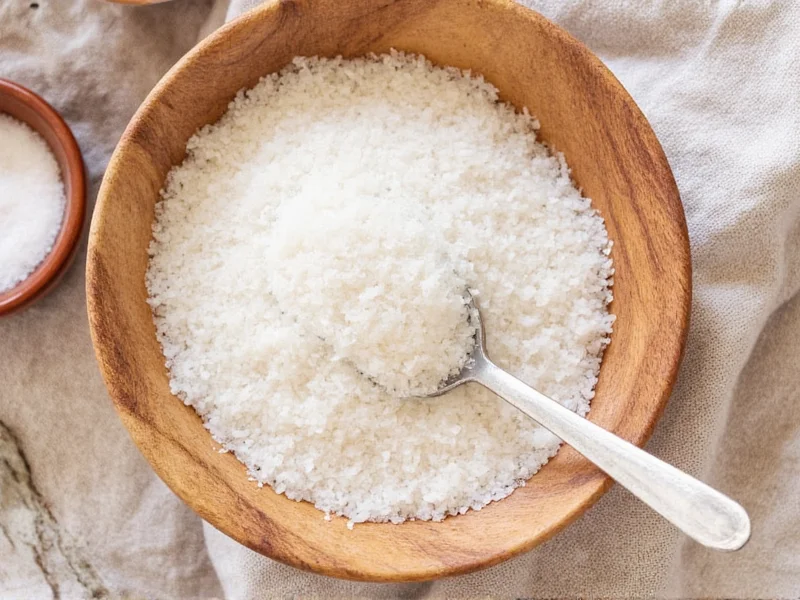Reducing sodium intake is crucial for millions managing hypertension, heart disease, or kidney conditions. The American Heart Association recommends no more than 2,300 mg of sodium daily, ideally moving toward 1,500 mg for most adults. Finding effective low-salt alternatives isn't just about removing salt—it's about strategically enhancing flavor through natural compounds that stimulate our taste receptors differently.
Why Sodium Reduction Matters
Excess sodium causes fluid retention, increasing blood pressure and straining cardiovascular systems. Research published in The New England Journal of Medicine shows that reducing daily sodium intake by 1,200 mg could prevent 60,000 to 120,000 coronary heart disease events annually in the US alone. For those with salt-sensitive hypertension, strategic low-sodium seasoning alternatives become essential medical tools rather than mere culinary preferences.
Science-Backed Low Salt Alternatives
Understanding how taste receptors work helps identify effective salt substitutes. Sodium ions activate specific receptors on our tongues, but other compounds can trigger similar responses through different pathways. Here's what actually works:
| Alternative Category | Specific Options | Best Uses | Sodium Reduction Potential |
|---|---|---|---|
| Herb Blends | Basil, oregano, thyme, rosemary, cilantro | Tomato-based dishes, grilled vegetables, fish | 100% sodium elimination |
| Citrus & Vinegars | Lemon juice, lime zest, apple cider vinegar, balsamic | Salad dressings, roasted vegetables, marinades | 100% sodium elimination |
| Umami Boosters | Mushrooms, nutritional yeast, tomato paste, seaweed | Gravies, soups, sauces, vegetarian dishes | 75-100% sodium reduction |
| Spice Mixtures | Cumin, paprika, garlic powder, onion powder, black pepper | Meat rubs, roasted vegetables, bean dishes | 100% sodium elimination |
| Medical Alternatives | Potassium chloride blends (e.g., Morton Salt Substitute) | General cooking (with physician approval) | 60-70% sodium reduction |
Implementing Natural Salt Substitutes Effectively
Simply removing salt without replacement creates bland food that's difficult to maintain long-term. The most successful low-sodium transitions use layered flavor techniques:
Herb and Spice Strategies
Fresh herbs provide volatile compounds that stimulate multiple taste receptors simultaneously. Try these evidence-based combinations:
- Mediterranean profile: Oregano + lemon zest + garlic (ideal for chicken and vegetables)
- Latin-inspired: Cilantro + lime + cumin (perfect for beans and fish)
- Smoky depth: Paprika + onion powder + black pepper (excellent for roasted vegetables)
Dried herbs work well in cooked dishes, while fresh herbs should be added at the end of cooking to preserve their volatile flavor compounds.
Citrus and Acid Application
Acids like lemon juice don't replace salt's function but enhance perceived saltiness through trigeminal nerve stimulation. A study in Food Quality and Preference demonstrated that adding 10ml of lemon juice to dishes allowed for 25% less salt while maintaining perceived saltiness. Use citrus:
- As finishing element (not cooked long)
- In salad dressings with olive oil
- To brighten soups and stews just before serving
Important Considerations for Medical Conditions
While exploring healthy low sodium seasoning alternatives, certain health conditions require special attention:
- Kidney disease patients: Avoid potassium-based salt substitutes without medical supervision
- Heart failure: Focus on herb-based alternatives rather than potassium substitutes
- Medication interactions: Some blood pressure medications increase potassium retention
Always consult your healthcare provider before making significant dietary changes, especially when managing chronic conditions. The best natural salt substitutes for cooking vary based on individual health profiles.
Building Long-Term Flavor Habits
Research shows it takes 6-8 weeks for taste buds to adjust to lower sodium levels. During this transition period, gradually reduce salt while increasing other flavor elements. Start with a 25% salt reduction while adding complementary herbs, then incrementally decrease salt over subsequent weeks.
Reading food labels becomes essential when adopting low-sodium alternatives. Many processed 'healthy' seasonings contain hidden sodium—aim for products with less than 5% daily value per serving. Creating your own herb blends ensures complete control over ingredients while providing the most effective low sodium flavor enhancers.
Frequently Asked Questions
What's the best salt substitute for people with high blood pressure?
Herb and spice blends provide the safest salt alternatives for hypertension management. Research shows garlic powder, onion powder, and black pepper create flavor complexity without affecting blood pressure. Citrus juices and vinegars also enhance perceived saltiness through acidity. Potassium-based substitutes require physician approval due to potential medication interactions.
Can I completely eliminate salt from my diet safely?
Complete salt elimination isn't recommended as sodium is an essential electrolyte. The goal is reducing excess sodium, not eliminating it entirely. Most whole foods contain natural sodium—about 500mg daily—which meets basic physiological needs. Focus on eliminating added salt and high-sodium processed foods rather than all sodium sources.
How do I make food taste good without salt?
Build flavor through multiple dimensions: use fresh herbs added at the end of cooking, acids like lemon juice or vinegar, umami-rich ingredients like mushrooms, and spice blends that create complexity. Toasting spices before use releases more flavor compounds. The key is layering different taste elements rather than relying on a single dominant flavor like salt.
Are salt substitutes healthy?
Potassium-based salt substitutes can be healthy for many people but require caution with certain medical conditions. Those with kidney disease or taking ACE inhibitors should avoid them without medical supervision. Herb-based alternatives and citrus enhancements provide the safest natural salt substitutes for cooking. Always check with your healthcare provider before using commercial salt substitutes if you have chronic health conditions.











 浙公网安备
33010002000092号
浙公网安备
33010002000092号 浙B2-20120091-4
浙B2-20120091-4